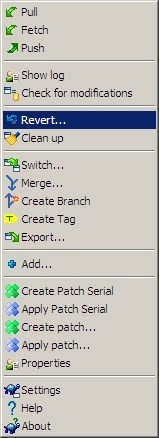

- Sourcetree app review software#
- Sourcetree app review code#
Now you can start to work with the app, create a new project, connect it to the SourceTree, upload the information on SourceTree, connect it to GitHub and let them communicate with data and upload those changes on GitHub. This is an introduction to the SourceTree. Now you can see the changes on GitHub after you refresh the page. This is how the SourceTree communicates with GitHub and uploads changes.
Sourcetree app review code#
Here you can define which brunch to upload code to. After that, you will see the drop-down with repositories.
Sourcetree app review software#
List the items you want to commit in the input field.ī) Then tick 'Push changes immediately.' The software will push the changes to the relevant branch when you click the 'Commit' button.Ĭ) Click 'Push' on the top right. If you want to upload those changes, you need to follow a certain procedure of saving information or code on GitHub.Ī) At first, you need to select the items you want to push on. You will see the files that have been changed. You can create a new branch from 'Branches' tab. You can see a list of updates for a particular project.Ĩ. On which model each team member is working right now. You can enter the clone project and see who has committed the latest code and who is working on the project. What we are doing is fetching the master branch which in its turn will fetch the whole project into your local system. If you want several team members to work on the same task simultaneously, you create a branch for that, assign team members to the branch, and start work.
Find and make copies of remote repositories via a user-friendly SourceTree interface.Ī branch is basically a separation of the module that you want your team members to work on. Group them, set dependencies, and do other helpful things. Manage your projects smarter with Submodules. Key features: Easy and flexible installation, Clear dashboard, Great scaling operations, Monitoring is an integral part, Great load balancing concepts, Monitors. Use it to make commits cleaner and clearer. You will like the interactive rebase tool the SourceTree offers. SourceTree and out-of-the-box git-flow branching allows you to keep the repositories clutter-free, which facilitates high-capacity development. You don't need to leave the SourceTree to find branches, commits, and file changes, do it within the app. Your team can keep an eye on big data assets from a single location thanks to SourceTree support of Git Large File Support. Learn from detailed tutorials throwing light at merging, branching, and many more aspects. Working with Git properly requires extensive knowledge. SourceTree is compatible with two popular OS, so you can harness the power of Git no matter of your preferences (Windows or Mac). Review informative branching diagrams and achieve team objectives keeping up the good job. Get updates associated with your code on the fly. You don't have a single chance to miss anything. Using the Client you get on top of the tasks you are working at. Other Benefits: Kubernetes is backed by the Cloud Native Computing Foundation (CNCF), huge community among container orchestration tools, it is an open source and modular tool that works with any OS. Scalability: All-in-one framework for distributed systems. Monitoring: It supports multiple versions of logging and monitoring when the services are deployed within the cluster (Elasticsearch/Kibana (ELK), Heapster/Grafana, Sysdig cloud integration). Functionality: Kubernetes as a complex installation and setup process, but it not as limited as Docker Swarm. Applications: An application can be deployed using a combination of pods, deployments, and services (or micro-services). Key features: Easy and flexible installation, Clear dashboard, Great scaling operations, Monitoring is an integral part, Great load balancing concepts, Monitors the condition and ensures compensation in the event of failure. The main reason we have chosen Kubernetes over Docker Swarm is related to the following artifacts: Redis as preferred in-memory database/store (great for caching). PostgreSQL as preferred database system. Amazon S3) for deploying in stage (production-like) and production environments SSLMate (using OpenSSL) for certificate management.  nginx as web server (preferably used as facade server in production environment). Heroku for deploying in test environments. Kubernetes as cluster management for docker containers. VirtualBox for operating system simulation tests. Docker Compose for multi-container application management) Prettier / TSLint / ESLint as code linter. CircleCI for continuous integration (automatize development process). Respectively Git as revision control system.
nginx as web server (preferably used as facade server in production environment). Heroku for deploying in test environments. Kubernetes as cluster management for docker containers. VirtualBox for operating system simulation tests. Docker Compose for multi-container application management) Prettier / TSLint / ESLint as code linter. CircleCI for continuous integration (automatize development process). Respectively Git as revision control system. 
GitHub Pages/ Markdown for Documentation, GettingStarted and HowTo's) for collaborative review and code management tool Our whole DevOps stack consists of the following tools:







 0 kommentar(er)
0 kommentar(er)
